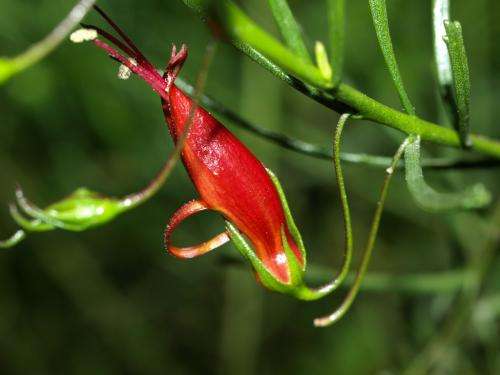Emu bush likely answer to livestock methane emissions

Animal microbiologists have been trialling alternative fodder plants for ruminants, to reduce methane production and improve nutrition.
UWA Assistant Professor Zoey Durmic says the story started some 10 years ago when they began assessing plants that could mitigate gas production, and that grew during dry summers.
"We are facing different problems such as drought and salinity," she says.
"Methane is also a potent greenhouse gas and we all blame sheep and cattle for this."
She says a 2006 European Union ban on the use of antibiotics to promote animal growth is another reason for the research.
"We realised that we had to find something publically acceptable, and why not plant compounds?" she says.
"Eremophila glabra [emu bush] seems to be most active, one when it comes to healthy sheep and when it comes to methane and that's why we put more of our interest into that one.
"We have discovered that when Eremophila glabra is had as part of a mixed diet, when you mix it with oat chaff, or something else, it can reduce methane while maintaining productivity."
PhD candidate Xi Xi Li based her doctoral studies on Eremophila glabra as a diet supplement for sheep.
Prof Durmic, who was her supervisor, says although animals were known to graze on about 600 native species, they chose it because other Eremophila species had been used for traditional Aboriginal medicines.
They subjected parts of the plant to simple experiments with a test tube.
"We mix it with rumen fluid from donor animals," she says.
"In a way we are mimicking what happens in the animal gut without actually using the animal.
"Then we ferment it.
"We measure the production of gasses during that fermentation."
As preliminary examination proved Eremophila to be a potent methane production inhibitor, they decided to test it in what Prof Durmic calls an "artificial sheep".
"We move them into this artificial sheep which is basically a set of fermenters," she says.
These are replenished daily with rumen, and each fermenter is "fed" with a different ratio of Eremophila and oaten chaff.
They chose the latter because it is often fed to sheep in regions where Eremophila glabra grows.
Varying proportions of Eremophila resulted in between 32 and 45 per cent less methane than the control.
Ms Li is now writing another paper about her further in vivo trials, after she successfully fed the mixture to live sheep.
More information: XiXi Li, Zoey Durmic, ShiMin Liu, Chris S. McSweeney, Philip E. Vercoe, "Eremophila glabra reduces methane production and methanogen populations when fermented in a Rusitec, Anaerobe," Available online 10 November 2013, ISSN 1075-9964, DOI: 10.1016/j.anaerobe.2013.10.008.
Provided by Science Network WA



















